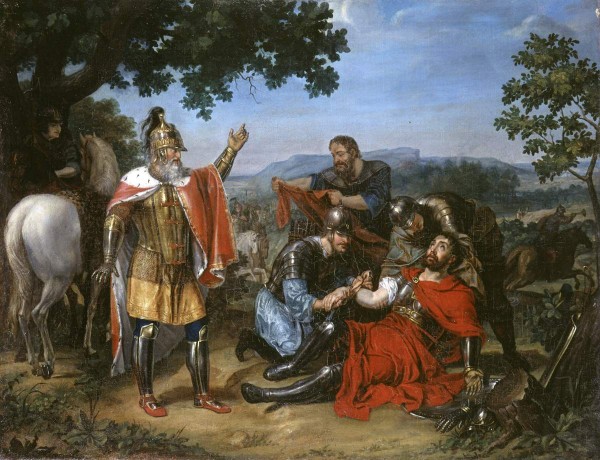The artist is Ugryumov

Grand Duke Dmitry Donskoy (1350–1389).
Grand Duke Dmitry Ivanovich, Grand Duke of Moscow and Vladimir, was the grandson of Ivan Kalita. Having lost his father at nine, he was under the guardianship of Metropolitan Alexy. In the second half of the 1360s and in the 1370s diplomatic and military methods, he significantly strengthened the position of Moscow, both in front of the Golden Horde and among other Russian principalities. In 1367–1368 he replaced the wooden walls of the Kremlin with more durable white -stone. In 1380, commanding the united squad of different lands, he defeated the hordes of Mamaia on the Kulikovo field between the Don and the Nepraravaya. For this victory, which has become a prologue to gain complete independence from the Horde, received the nickname of the Don. In 1988, it was canonized in the face of a noble. (P. To.)
Electronic catalog “Heroes and villains of Russian history”. SPb, 2010. With. 84.
January 28, 1805, a program for a large gold medal was given to the picturesque and sculptural historical class of IAh. It was proposed to “represent the Grand Duke Dmitry Donskoy, when, upon the observation of the perfect victory over Mamay, the remaining princes of the Russian and other warriors, having risen into the battlefield, did not know where their Grand Duke was located; They only knew that three horses were killed under him, and he himself was seriously injured. They find him in the grove with the last even out of breath; Blood flowed from his wounds: but the joyful news of the perfect defeat of the Tatars revives the dying Grand Duke. “. From the pupils of the picturesque class, it should have been written about. AND. Kiprensky, c. D. Charushin and and. AND. Ugryumov. The canvas of Kiprensky, whose patriotic pathos was consonant with the era of the Napoleonic wars, which Russia entered, a large gold medal at the Extraordinary Assembly of IAX was awarded on September 1, 1805. (WITH. M.)
Electronic catalog “Heroes and villains of Russian history”. SPb, 2010. With. 89.
Leave a Reply